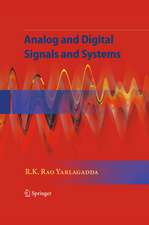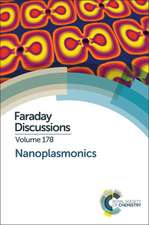Digital Satellite Communications Systems and Technologies: Military and Civil Applications: The Springer International Series in Engineering and Computer Science, cartea 186
Editat de A. Nejat Inceen Limba Engleză Hardback – 30 sep 1992
| Toate formatele și edițiile | Preț | Express |
|---|---|---|
| Paperback (1) | 2103.70 lei 6-8 săpt. | |
| Springer Us – 12 oct 2012 | 2103.70 lei 6-8 săpt. | |
| Hardback (1) | 1837.75 lei 6-8 săpt. | |
| Springer Us – 30 sep 1992 | 1837.75 lei 6-8 săpt. |
Din seria The Springer International Series in Engineering and Computer Science
- 24%
 Preț: 1041.98 lei
Preț: 1041.98 lei - 20%
 Preț: 643.50 lei
Preț: 643.50 lei - 18%
 Preț: 1225.62 lei
Preț: 1225.62 lei - 18%
 Preț: 965.02 lei
Preț: 965.02 lei - 20%
 Preț: 646.12 lei
Preț: 646.12 lei - 18%
 Preț: 948.79 lei
Preț: 948.79 lei - 20%
 Preț: 646.62 lei
Preț: 646.62 lei - 15%
 Preț: 637.46 lei
Preț: 637.46 lei - 20%
 Preț: 643.83 lei
Preț: 643.83 lei - 18%
 Preț: 949.23 lei
Preț: 949.23 lei - 20%
 Preț: 644.48 lei
Preț: 644.48 lei - 20%
 Preț: 994.92 lei
Preț: 994.92 lei - 20%
 Preț: 645.97 lei
Preț: 645.97 lei - 18%
 Preț: 946.87 lei
Preț: 946.87 lei - 20%
 Preț: 995.57 lei
Preț: 995.57 lei - 18%
 Preț: 956.99 lei
Preț: 956.99 lei - 20%
 Preț: 644.98 lei
Preț: 644.98 lei - 15%
 Preț: 649.54 lei
Preț: 649.54 lei - 18%
 Preț: 950.21 lei
Preț: 950.21 lei - 18%
 Preț: 1221.38 lei
Preț: 1221.38 lei - 18%
 Preț: 957.62 lei
Preț: 957.62 lei - 15%
 Preț: 643.99 lei
Preț: 643.99 lei - 18%
 Preț: 948.47 lei
Preț: 948.47 lei - 18%
 Preț: 947.35 lei
Preț: 947.35 lei - 20%
 Preț: 1284.65 lei
Preț: 1284.65 lei - 20%
 Preț: 1628.31 lei
Preț: 1628.31 lei - 20%
 Preț: 1285.78 lei
Preț: 1285.78 lei
Preț: 1837.75 lei
Preț vechi: 2241.16 lei
-18% Nou
Puncte Express: 2757
Preț estimativ în valută:
351.70€ • 365.82$ • 290.35£
351.70€ • 365.82$ • 290.35£
Carte tipărită la comandă
Livrare economică 14-28 aprilie
Preluare comenzi: 021 569.72.76
Specificații
ISBN-13: 9780792392545
ISBN-10: 079239254X
Pagini: 604
Ilustrații: XVII, 604 p.
Dimensiuni: 155 x 235 x 33 mm
Greutate: 1.05 kg
Ediția:1992
Editura: Springer Us
Colecția Springer
Seria The Springer International Series in Engineering and Computer Science
Locul publicării:New York, NY, United States
ISBN-10: 079239254X
Pagini: 604
Ilustrații: XVII, 604 p.
Dimensiuni: 155 x 235 x 33 mm
Greutate: 1.05 kg
Ediția:1992
Editura: Springer Us
Colecția Springer
Seria The Springer International Series in Engineering and Computer Science
Locul publicării:New York, NY, United States
Public țintă
ResearchCuprins
Contributing Authors.- Preface.- Acknowledgments.- 1: INTRODUCTION.- 1.1 Objective and approach.- 1.2 Content of the book.- 2: CURRENT NATO COMMUNICATIONS PLANNING (SATCOM AND THE NATO C3 ARCHITECTURE).- 2.1 Planned evolution of the NICS.- 2.2 Implications of the C3 architecture for NATO SATCOM.- 2.3 Planned evolution of the NATO SATCOM system.- 2.4 Future requirements.- 2.5 References.- 3: COMPARISON OF NATO AND OTHER SYSTEMS.- 3.1 Objective.- 3.2 Services and system characteristics.- 3.3 Environmental factors.- 3.4 References.- 4: ISSUES AND FUTURE TRENDS IN SATELLITE COMMUNICATIONS.- 4.1 Objective.- 4.2 Issues.- 4.3 Responses.- 4.4 Areas to be considered.- 5: THREAT TO SATELLITE COMMUNICATIONS.- 5.1 The threat to NATO SATCOM post-2000.- 5.2 Uplink jamming.- 5.3 Downlink jamming.- 5.4 Interception.- 5.5 Nuclear threat.- 5.6 Physical attack.- 5.7 Piracy (unauthorized access).- 5.8 References.- 6: THREAT IMPLICATIONS AND COUNTER¬MEASURES.- 6.1 ECCM techniques.- 6.2 Information coding.- 6.3 Speech coding.- 6.4 Satellite hardening.- 6.5 References.- 7: ENVIRONMENT.- 7.1 Propagation factors.- 7.2 Precipitation effects.- 7.3 Frequency bands.- 7.4 Interference and noise.- 7.5 Countering propagation effects.- 7.6 References.- 8: TECHNOLOGY REVIEW.- 8.1 Device technologies for signal processing.- 8.2 Digital and SAW techniques for on-board processing.- 8.3 Spacecraft phased-array and MBA antennas.- 8.4 Solid-state spaceborne power amplifiers.- 8.5 Laser communications for intersatellite links.- 8.6 Laser communications to submerged submarines.- 8.7 Advanced materials for spacecraft.- 8.8 Superconductivity.- 8.9 Artificial intelligence and neural networks.- 8.10 Robotics and control.- 8.11 Power generation in space (*).- 8.12 Spacecraft propulsion systems.- 8.13 Spacetransportation.- 8.14 Earth station technology.- 8.15 Principles for selecting sponsored R & D projects.- 9: NATIONAL SATCOM SYSTEMS AND DEVELOPMENTS.- 9.1 Introduction.- 9.2 UK systems.- 9.3 Systems and developments in the USA.- 9.4 Canadian systems.- 9.5 French systems and developments.- 9.6 Systems of The Federal Republic of Germany.- 9.7 ESA systems.- 9.8 Russian systems.- 10: POSSIBLE SATCOM SYSTEM ARCHITECTURES.- 10.1 Desired characteristics.- 10.2 Inclined elliptical orbits (Molniya, Tundra, and Loopus types).- 10.3 Satellite cluster systems (CloudSat and MEWS).- 10.4 Tethered satellite systems.- 10.5 LightSat and proliferated LEO systems.- 10.6 Summary evaluation.- 10.7 Candidate architectures.- 10.8 References.- 11: COST-PERFORMANCE ANALYSIS.- 11.1 System features.- 11.2 Cost-performance comparison of candidate architectures.- 11.3 Approaches to cost reduction.- 12: CONCLUDING REMARKS.

























